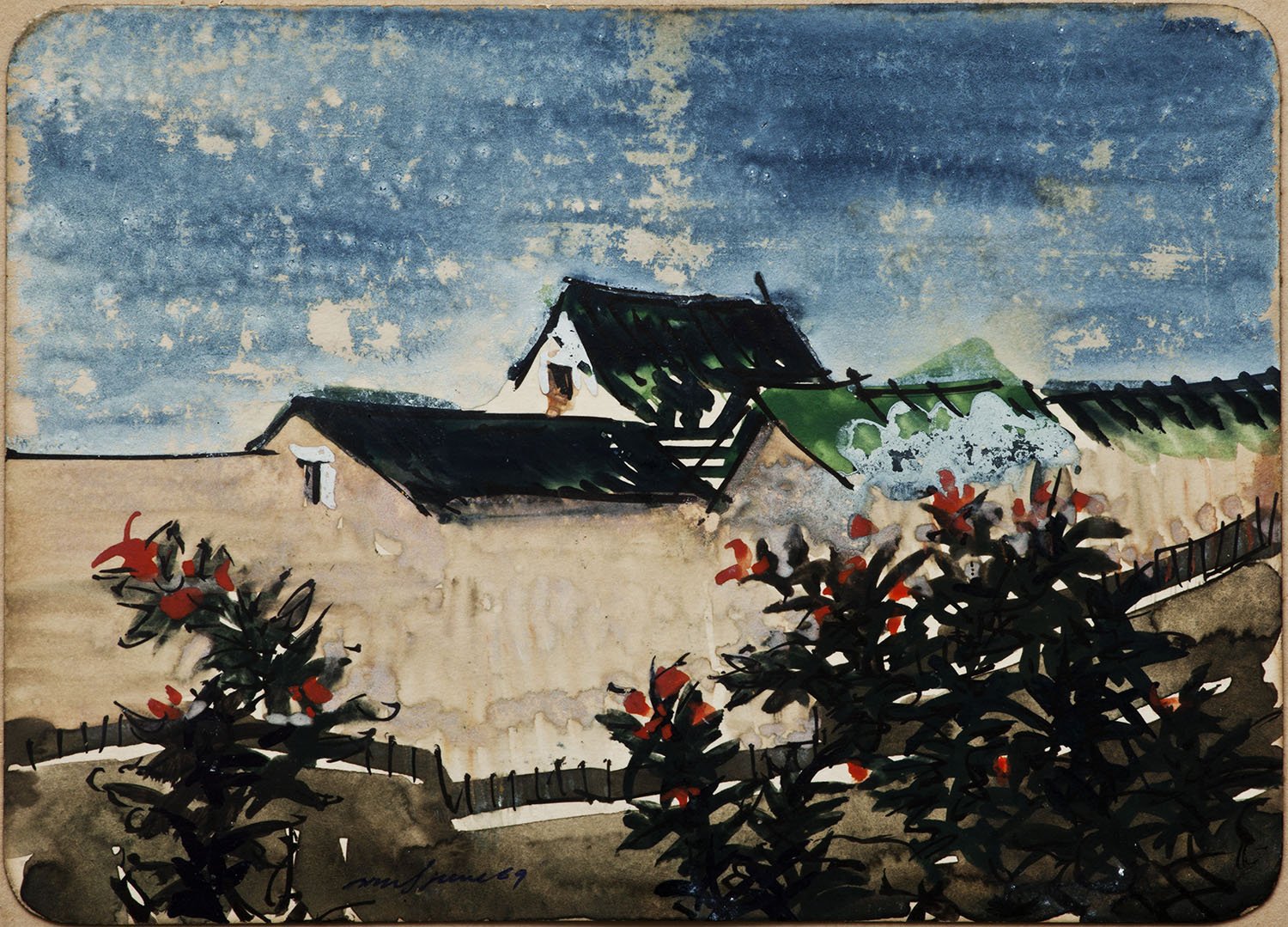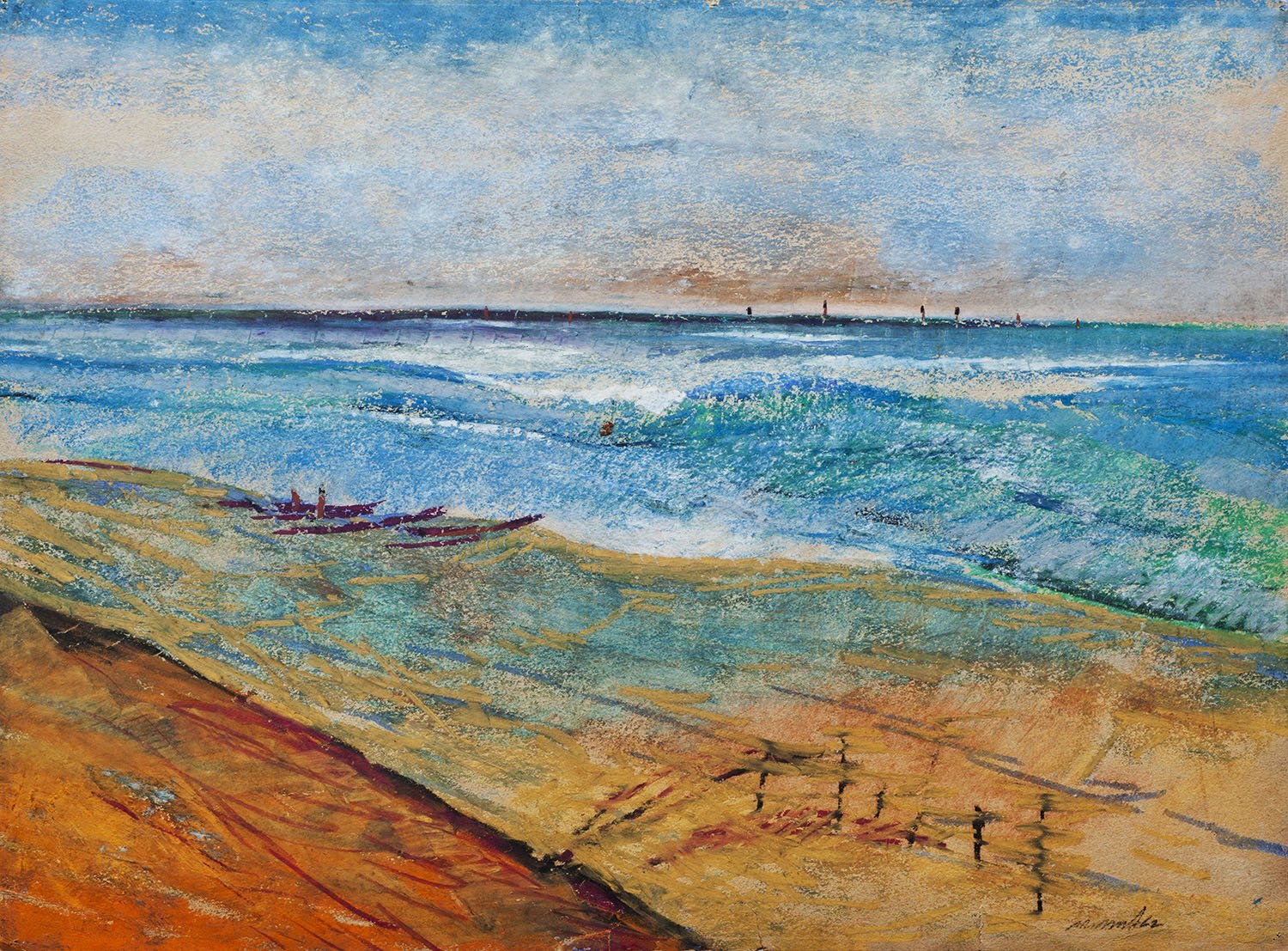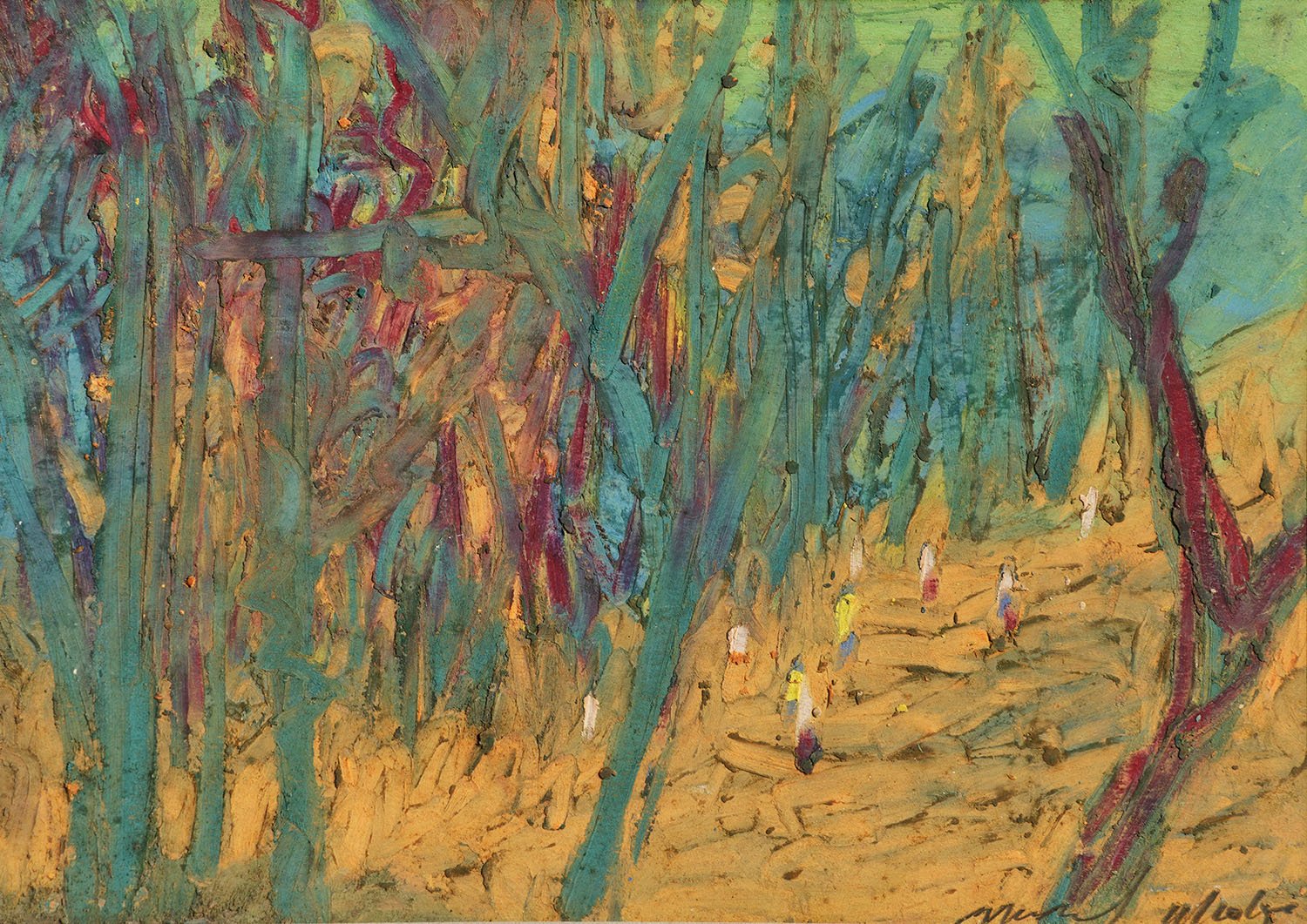
Gopal Ghose: The Chromatic Image
April 20 – June 17, 2017 at Akar Prakar, Delhi
The 1940s present a significant moment of transformation in the linguistic choices for a painter like Gopal Ghose ; as such it would be illuminating to trace briefly the context of this shift in the shared concerns of one of the earliest artists’ collectives in early modern Indian art.
The Calcutta Group was initiated in 1943, the year of infamous famine in Bengal. The eight participants of their first exhibition in 1945 were Prodosh Das Gupta, Kamala Das Gupta (nee T.C. Kamala), Gopal Ghose, Paritosh Sen, Nirode Majumdar, Subho Tagore, Rathin Maitra, and Prankrishna Pal.
In the context of the famine of 1943 and the subsequent social calamity of the 1946 communal riots, it has been evident that the conventional notion of Gopal Ghose as a painter of landscapes in a distinctly lyrical personal style combining the boldness of bright pure colours with the swift calligraphic lines, is but a partial view. That is not to deny entirely that Gopal Ghose painted landscapes that would fall within the said category. In these, the lyrical in colour and form combined with the gusto of a flourish in the calligraphic stroke of the brush to arrive at an expression that would approve the established stylistic identity of the artist.
Sometimes, critics have even felt impelled to draw a comparison between the calligraphic in his paintings with Far Eastern sensibilities, which although not entirely absent, exists in a sufficiently transformed ethos. Spontaneity of execution brought about in Gopal Ghose’s pictures as dynamic rhythmic flow; such flowing rhythm reflected the impulsiveness of an artist impatient to inscribe the conceived image on to the pictorial surface, thereby retaining within it a sense of emotive urgency in the very execution. And that, by definition, should qualify as expressionistic.
Gopal Ghose | Untitled | Watercolour on paper | 6.75 x 11 in | Circa 1950
Gopal Ghose | Untitled | Watercolour on paper | 5 x 7 in | Circa 1970
Gopal Ghose | Untitled | Mixed media on paper | 10.25 x 7 in | Circa 1950
Gopal Ghose | Untitled | Watercolour on paper | 5 x 9 in | 1969
Gopal Ghose | Untitled | Mixed media on paper | 8.25 x 11.25 in | Circa 1950
Gopal Ghose | Untitled | Mixed media on paper | 10.25 x 6.5 in | Circa 1950
Gopal Ghose | Untitled | Watercolour | 9.75 x 14.25 in | 1965
Gopal Ghose | Mixed media on paper | 14.5 x 19.5 in | 1962
Gopal Ghose | Untitled | Mixed media on paper | 4.75 x 6.75 in | 1956
Gopal Ghose | Untitled | Mixed media on paper | 4.75 x 6.75 in | 1956
Gopal Ghose | Untitled | Mixed media on paper | 4.75 x 6.75 in | 1956
Gopal Ghose | Untitled | Mixed media on paper | 5 x 7 in
Gopal Ghose | Untitled | Mixed media on paper | 4.75 x 6.5 in | 1950
Gopal Ghose | Untitled | Watercolour on paper | 4.75 x 6.25 in
Gopal Ghose | Untitled | Watercolour on paper | 9.5 x 13.5 in
Gopal Ghose | Untitled | Watercolour on paper | 9.75 x 12.75 in | 1971
Gopal Ghose | Untitled | Watercolour on paper | 13.5 x 9 in | 1947
Gopal Ghose | Untitled | Watercolour on paper | 13 x 9 in | 1947
Gopal Ghose | Watercolour on paper | 14.25 x 21.25 in | 1980
Gopal Ghose | Watercolour on paper | 13.25 x 8.5 in
Gopal Ghose | Watercolour on paper | 14.5 x 12.25 in | Circa 1950
Gopal Ghose | Watercolour on paper | 14.5 x 14.5 in | Circa 1950
Gopal Ghose | Watercolour on paper | 14.5 x 21.5 in | 1978
Gopal Ghose | Watercolour on paper | 14.5 x 21.75 in | 1980
Gopal Ghose | Watercolour on paper | 14.25 x 21.5 in | 1978
Gopal Ghose | Watercolour on paper | 14.25 x 21.5 in | 1980
Gopal Ghose
Born in Shyambazar (Kolkata), Gopal Ghose spent his childhood and adolescence shifting between Shimla, Benares and Allahabad. In 1931, he enrolled as a student at the Maharaja School of Art & Craft, Jaipur, under the guidance of Sailendranath Dey, from where he obtained his Diploma in Painting in 1935. Subsequently, he enrolled at the Government School of Art, Madras, in 1936, under the tutelage of Deviprasad Roy Chowdhury. Beginning with a pictorial language that was inspired by the latter, Gopal Ghose’s work transformed during the 1940s; his sketches of the infamous man-made famine of 1943 and the paintings executed during his association with the Calcutta Group testify his shift to a more contextually relevant pictorial diction. During the early 1940s, he taught at the Indian Society of Oriental Art, Kolkata, before he joining the Government School of Art, Kolkata, where he taught till 1972.
Gopal Ghose’s art received critical attention from Rabindranath Tagore, Abanindranath Tagore, Nandalal Bose and Stella Kramrisch. In 1956, he was one of the participants in a collective project involving designs by contemporary Asian artists engraved on Steuben Crystal, which were exhibited at the National Gallery of Art, Washington, and at the Metropolitan Museum of Art, New York. In 1963, he went on a tour of the United States as part of the Foreign Leader programme of the Bureau of Education and Cultural Affairs, US Department of State. He had several shows of his paintings across India, and continues to be widely admired for his work by art critics and collectors.
He was diagnosed with lung cancer, and breathed his last on 30th July, 1980.


























